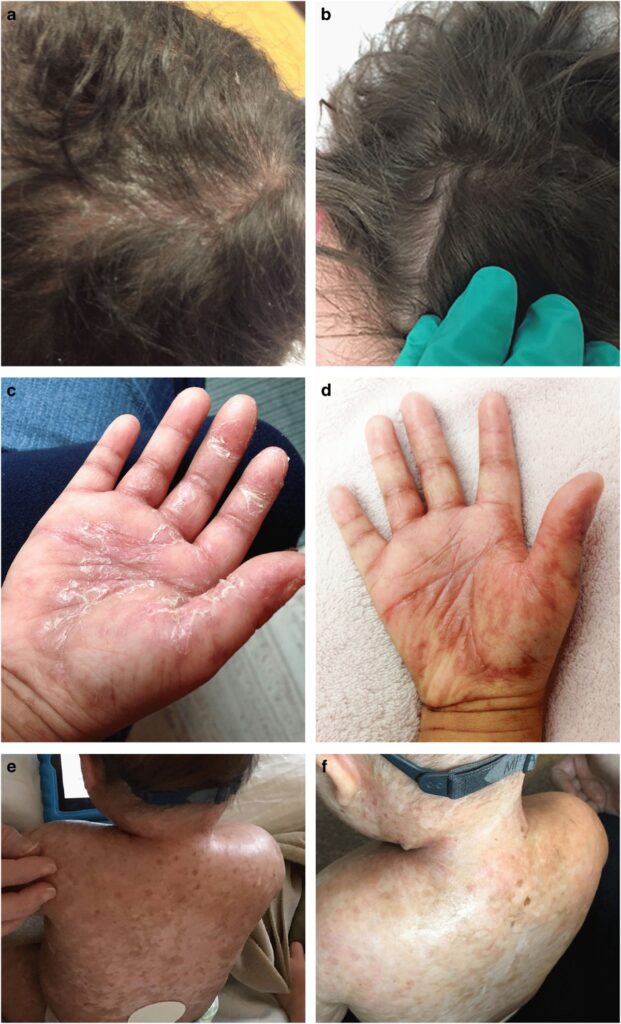Chronic graft-versus-host disease (GVHD) is a complex and potentially life-threatening complication following allogeneic hematopoietic stem cell transplantation (HSCT). It occurs when the donor’s immune cells attack the recipient’s tissues, mistaking them as foreign. This guide provides an in-depth overview of chronic GVHD, covering its causes, symptoms, diagnosis, treatment options, and strategies for prevention.

What Is Chronic Graft-Versus-Host Disease?
Chronic GVHD is an immune-mediated condition that typically arises more than 100 days after an allogeneic HSCT. Unlike acute GVHD, which predominantly affects the skin, liver, and gastrointestinal tract, chronic GVHD can involve multiple organs, leading to significant morbidity and reduced quality of life.
Causes and Risk Factors
The primary cause of chronic GVHD is an immune response by the donor’s T-cells against the host’s antigens. Key risk factors include:
- HLA mismatch between donor and recipient.
- Use of peripheral blood stem cells (PBSCs) instead of bone marrow.
- Older age of donor or recipient.
- Previous acute GVHD.
- Female donor to male recipient due to minor histocompatibility antigens.
Symptoms and Organ Involvement
Chronic GVHD can manifest in a wide range of symptoms depending on the organs involved. Below is a breakdown of the most commonly affected areas:
Skin and Appendages
- Symptoms: Rash, pigmentation changes, sclerotic patches, dry skin, and hair loss.
- Complications: Skin thickening and impaired mobility in severe cases.
Eyes and Mouth
- Eyes: Dry eye syndrome, conjunctivitis, and vision disturbances.
- Mouth: Dryness, oral ulcers, sensitivity, and lichen planus-like changes.
Gastrointestinal Tract
- Symptoms: Dysphagia, abdominal pain, diarrhea, and malabsorption.
- Complications: Weight loss and nutritional deficiencies.
Liver
- Symptoms: Jaundice, elevated liver enzymes, and fatigue.
- Complications: Fibrosis and cirrhosis in advanced cases.
Lungs
- Symptoms: Cough, dyspnea, and recurrent infections.
- Complications: Bronchiolitis obliterans, leading to progressive respiratory failure.
Joints and Muscles
- Symptoms: Stiffness, pain, and reduced range of motion.
- Complications: Contractures and disability.
Diagnosis
Clinical Assessment
Diagnosis relies on a combination of clinical evaluation, history of transplantation, and exclusion of other conditions. Key diagnostic criteria include:
- Classic signs such as sclerotic skin changes.
- Chronic symptoms involving multiple organ systems.
Laboratory and Imaging Tests
- Blood tests: Evaluate liver enzymes, inflammatory markers, and immunoglobulin levels.
- Pulmonary function tests (PFTs): Assess lung involvement.
- Biopsy: Confirmatory diagnosis through histopathological analysis.
- Imaging: MRI or CT for organ-specific complications.
Treatment Options
First-Line Therapies
- Corticosteroids: Prednisone is the cornerstone of treatment.
- Calcineurin inhibitors: Such as tacrolimus or cyclosporine.
Second-Line Therapies
When steroids fail, second-line options include:
- Janus kinase (JAK) inhibitors: Ruxolitinib.
- Extracorporeal photopheresis (ECP): For refractory cases.
- Biologics: Agents like rituximab or abatacept.
- Immunosuppressive drugs: Mycophenolate mofetil or sirolimus.
Supportive Care
- Physical therapy: To manage joint and muscle stiffness.
- Ocular lubrication: For dry eye relief.
- Nutritional support: Address malabsorption and deficiencies.
- Psychological support: Mental health management for emotional well-being.
Prevention Strategies
Donor Selection
- Prioritize HLA-matched sibling donors.
- Consider male donors for male recipients to minimize risk.
Prophylactic Medications
- Administer calcineurin inhibitors and methotrexate during the early post-transplant period.
- Use anti-thymocyte globulin (ATG) in high-risk cases.
Early Monitoring
- Frequent follow-ups for timely detection of early symptoms.
- Use of biomarkers like ST2 or REG3α for predicting risk.
Prognosis and Long-Term Management
Chronic GVHD is a long-term condition requiring ongoing management. While advancements in treatment have improved outcomes, severe forms can significantly impact life expectancy and quality of life. Regular monitoring, multidisciplinary care, and patient education are crucial for optimal management